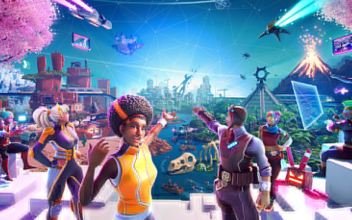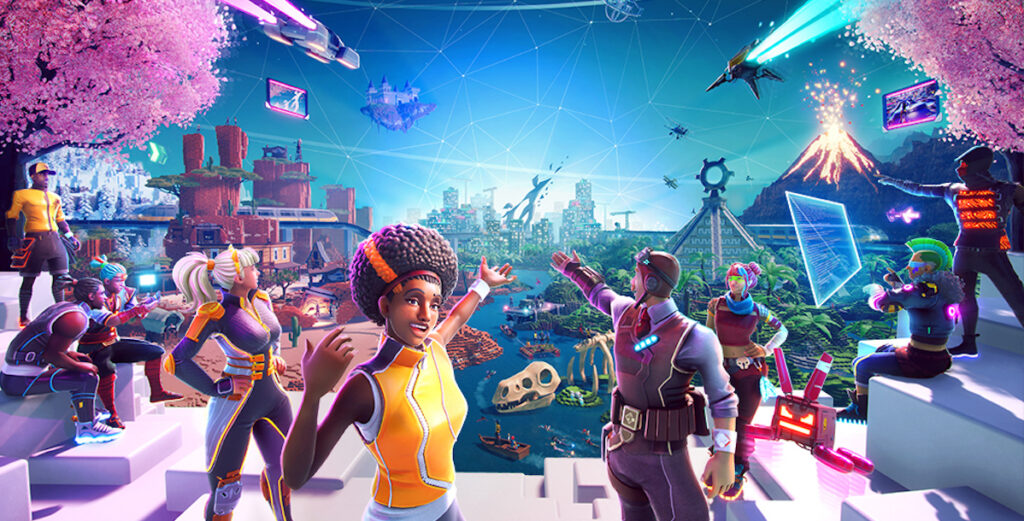Remember the promise of the internet? A promise that it foretold of a world where people could effortlessly access infinite amounts of information? Where people could forge deeper connections from anywhere at any time. And where people could be totally free and unfettered in a decentralized space? What a future the internet was to supposed to have!
Yet, people actually feel more socially isolated than ever before. No depeer connections around meaningful interaction. Instead we mindlessly “like”, “tweet”, “upvote”, “share” – but lack a sense of community and meaningful engagement. Big Tech is using Big Data to own your digital identity and corner you in their centralized platforms.
Enter The Metaverse, is it a new dawn where fully decentralized internet can finally be realised? Where we will have engaging metaverse communities that harbor individuals with meaningful social interaction? Or is it new wine in old bottles? More of the same failed internet?
Why have some metaverses failed?
If you haven’t heard of Second Life, there’s no need to be embarrassed. Once a pioneer of the metaverse community– where users could roam, building and buying lands and brands – it wasn’t long until Second Life popularity dwindled. It was a game without Gamification, without a user journey that empowered its users. Quiet sad since applying game mechanics to enhance the Second Life user experience would have meant the survival of Second Life as a business.
It’s worth nothing that game mechanics like points, badges, winners/losers, etc., aren’t enough on their own. These bells and whistles have to be placed within a meaningful context to make it human. So the lack of human focus was at the center of the problem. People didn’t want to return to Second Life because they didn’t really know what they were doing there in the first place.
One of the most natural ways people find meaning is through purpose (Core Drive 1) coupled with social influence and relatedness (Core Drive 5) and joyful surprises (Core Drive 7). Without it, users pulled out, brands pulled out, and Second Life was reduced to a boring, immersive ghost town.
What Second Life did get right was that it empowered users to be creative (Core Drive 3) when building their own unique properties (which also leads to Core Drive 4: Ownership and Possession). But it lacked an empowering journey and importantly it was lacking community. After all, “creatives” thrive when there’s a meaningful community in which people can share, inspire, and provide/receive feedback.
Look at games like Minecraft and Fortnite. Do you know how much they shot up in popularity when COVID first struck? People who didn’t even play before were simply looking for meaningful social interactions. That’s also why community engagement is super important – it can make or break your metaverse.
Gamification “plays” into metaverse communities?
When it comes to the metaverse, the one of the main question that Octalysis gamification asks is: “How do we go from a bunch of people who simply come together in one digital platform, to empowering metaverse communities to come back on a daily basis?”
With Second Life, nothing happened except for just “hanging out”. It was the equivalent of liking a Facebook photo or commenting on a Twitter post. You get that momentary adrenaline hit, but it always leaves you feeling empty – thus the social isolation, anxiety, and depression that many social media users experience.
So, to effectively build true community engagement, your user journey needs these 6 main gamification ingredients:
- Epic Meaning & Calling (Core Drive 1)
- Development & Accomplishment (Core Drive 2)
- Empowerment of Creativity & Feedback (Core Drive 3)
- Ownership & Possession (Core Drive 4)
- Social Influence and Relatedness (Core Drive 5)
- Scarcity & Impatience (Core Drive 6)
This might seem like a lot to swallow. But it’s easier to digest when you place them into the context of key metaverse features, like:
- Social missions
- Non-fungible tokens
- Decentralized Autonomous Organizations (DAOs)
Social Missions
If life is a game, then what’s the main objective? A lot of people are searching for meaning in their lives. That’s why many people embark on social missions to create purpose for themselves (Core Drive 1 and 5 ). Social missions can include anything from cleaning up the oceans and rainforests to eliminating poverty or curbing corporate corruption. Just like people need a reason to wake up every day, people need a reason to return to your metaverse every day.
Second Life had a rather weak social mission. It was all about building, buying, and selling land. So how do you build a community around that? Most communities are based on shared values and goals. But buying and selling land are quite individualistic goals, and therefore, don’t lend themselves well to social missions and community-building.
That said, it still plays upon the important motivator of ownership and possession (Core Drive 4). But because ownership/possession is a left-brain core drive, which mainly deals with extrinsic motivators, it’s not enough for long-term user retention. The best way to keep them coming back for more is through right-brain, White Hat gamification, which focuses on intrinsic motivators. These motivators create the fun in the experience.
Non-Fungible Tokens (NFTs)
Non-fungible tokens (NFTs) and the metaverse go hand in hand. They store value, but not in the same way that typical fiat or cryptocurrency does. Let’s say you traded one bitcoin for another bitcoin. Then nothing gained, nothing lost. You’d have the exact same thing, which is why they’re “fungible”. But NFTs are more like trading cards. You might trade a Pokémon card like “Squirtle” for a Babe Ruth baseball card (not likely, but you get the point).
Second Life had virtual assets in the form of land, business etc. Even though it was not on the blockchain, the platform did extend users full ownership of their work. NFTs on the blockchain do not need a central authority to transfer ownership to the NFT holder.
Platforms like Facebook and Twitter fully own your digital identities. But in the metaverse, everything you contribute remains uniquely yours. This is great for long-term user retention, especially from a community-building perspective. Not only is empowerment of creativity a right-brain Core Drive it’s also white hat, meaning it makes us feel good.
Decentralized Autonomous Organizations (DAOs)
Speaking of ownership and creativity, a great tool for building sub-communities in your metaverse is through creator marketplaces, where a variety of decentralized autonomous organizations (DAOs) can come together and share their works. This largely differs from the “Big Brother” style of corporate culture, where everything is centralized, censored, and rigidly structured.
You can think of DAOs as player guilds that work towards a shared social mission. Any value that they create in the process is shared amongst them. So, in this way, DAOs allow people to have more ownership and control over whatever they’re working on. It’s all about public ownership. With centralized corporations, on the other hand, most of the control and decision-making is concentrated in the hands of very few people. Therefore, it makes it harder to feel a sense of ownership (Core Drive 4), let alone accomplishment (Core Drive 2), since you barely have a say nor gain recognition for your contributions.
However, the metaverse is open source and powered by blockchain, so it’s never been easier to claim credit where credit is due – to the actual contributors of the organization. In this way, you’re giving power to the community and the people within them. Not to mention, people can feel seen more when their contributions aren’t eclipsed by the big names at the top of the chain.
It’s the difference between owning a business versus working for a business. Who’s more likely to be motivated? People who are simply trading their time and talents for a paycheck? Or people who are working towards a common goal of their choice, feel in control, and can take ownership of their contributions?
Put simply, people are more likely to quit a corporation, but they’re less likely to give up on their own business because they crave the feeling of control and ownership (Core Drive 4), creative freedom and autonomy (Core Drive 3), and the feeling of accomplishment they get from their unique and creative contributions (Core Drive 2). DAOs allow people to come together and contribute to a shared cause in a meaningful way, without taking anything away from anyone else. With each member of the DAO feeling seen, heard, appreciated, and autonomous, you’re bound to build strong, passionate, and highly motivated communities.
Let us design Metaverse Communities for you
Building strong metaverse communities will keep users coming back for more.The last thing you want users asking is “Why am I here?” But the best part is, you don’t necessarily need to script a whole storyline for them. You simply need to create space for metaverse users to carve out their own paths and find like minded users to collaborate with.
That said, it’s easier said than done. To truly bolster user retention rates and give meaning to the metaverse, you’ll need intimate knowledge of gamification and the core drives of human behavior. So if you’re feeling lost, contact us!





